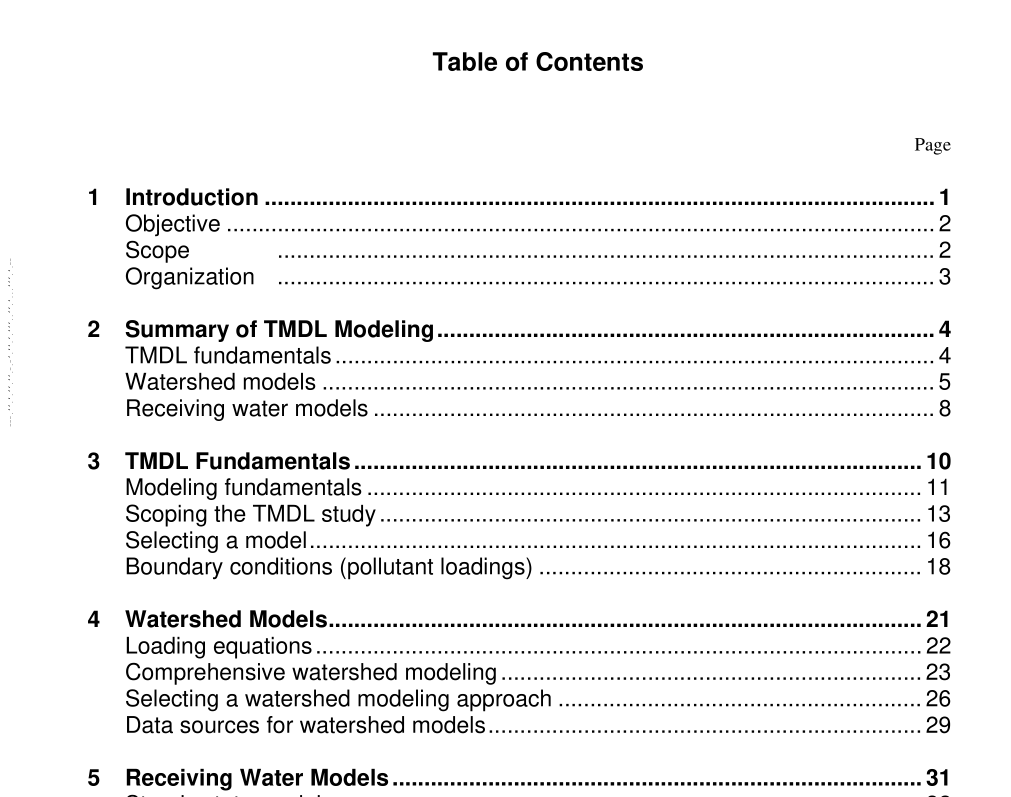API Publ 4736 pdf download

API Publ 4736 pdf download.Identification of Key Assumptions and Models for the Development of Total Maximum Daily Loads
The objective of this study was to review federal, state, and regional TMDL methodologies and guidance to identify key assumptions, variables, and input data required to develop waste load allocations (WLA) for point sources and load allocations (LA) for non-point sources that, when implemented, will restore water quality in an impaired water body so that it meets applicable water quality criteria and designated uses. The review focused on the models available to federal, state, regional, and local regulatory authorities to perform TMDL studies. The term “models” is used in its broadest sense, ranging from simple desktop calculations to complex mathematical models that must be run on powerful computers. The review is broken into 3 categories: (1) an overview of TMDL modeling including how models are selected and how the boundaries of the water body to be modeled are specified; (2) watershed models used to predict point and non-point source pollutant loadings from sub-watersheds and watershed; and (3) receiving water quality models that are used to predict the transport and fate of specific water quality constituents in a surface water body. The conclusions drawn from this review are presented in this summary section.
Receiving water models of some form will be at the heart of all TMDLs. These models will be used to predict the WLAs and LAs that are necessary to assure that an existing water quality impairment will be eliminated and that water quality and uses will be protected in the future. Therefore, selection and application of receiving water models will be one of the most important, if not the most important, aspects of TMDL development and implementation. There are a number of publicly available receiving water models that can be used for TMDLs. Any of the models reviewed for this project will give acceptable simulation results provided that the model is appropriate for the surface water body modeled and sufficient site-specific data are available for calibration and validation. Table 2-4 summarizes the principal considerations in the selection of receiving water models.
There is also a distinction within the dynamic modeling approach between those model formulations that assume equilibrium conditions between phases (i.e., mass transfer resistance between solids, water, and atmosphere is negligible) and those that assume that resistance to mass transfer between phases is significant. Dynamic models that simulate changing point and non-point source loads, hydrology, and hydrodynamics and equilibrium between solid, aqueous, and atmospheric phases are acceptable for pollutants with physical and chemical properties that are consistent with this assumption. If mass transfer resistance is important for a pollutant, then a model incorporating non-equilibrium conditions should be used for water quality simulations. Models may also be characterized as deterministic or empirical. A deterministic model uses theoretical mathematical constructions of the physical, chemical, and biological processes in a surface water to develop the cause-effect relationships that it simulates. An empirical model is a mathematical formulation that does not attempt to directly describe the underlying physical, chemical, or biological processes, but instead uses statistical methods or observed relationships to develop cause-effect relations between system inputs and outputs. It is common for deterministic models to incorporate empirical relationships for some of the internal functional relationships required to simulate receiving water quality and ecosystems. Similarly, most empirical models are based on an evaluation of the theoretical cause-effect relationships among the variables that are used as inputs and the predicted outputs. Thus, most of the models described in this report are based on a mix of deterministic and empirical relationships.









